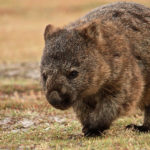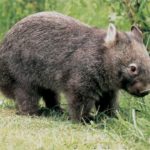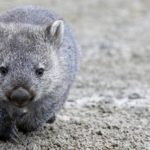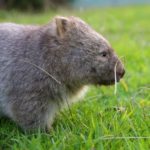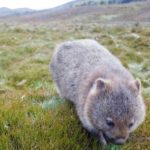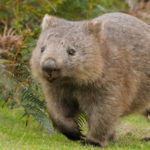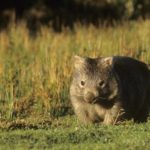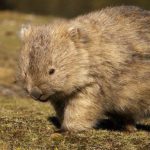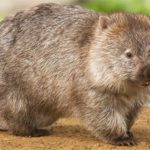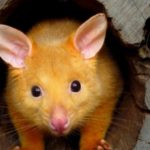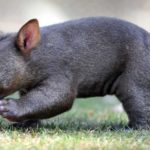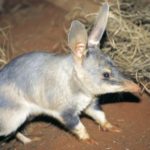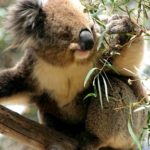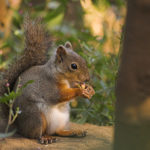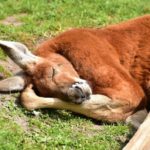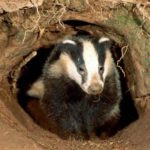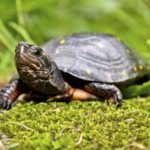Wombats
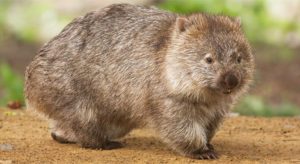 Wombats are a family of dwarf marsupials living in Australia. Wombats are burrowing burrows of herbivores, resembling little bears. Wombats reach a length of 70 to 120 cm and weight from 20 to 40 kg. Their body is built compact, limbs short and strong. On each of them are five fingers, out of which the outer four are crowned with large claws, adapted for digging the earth. The tail is short, the big head makes an impression slightly flattened, the eyes are small.
Wombats are a family of dwarf marsupials living in Australia. Wombats are burrowing burrows of herbivores, resembling little bears. Wombats reach a length of 70 to 120 cm and weight from 20 to 40 kg. Their body is built compact, limbs short and strong. On each of them are five fingers, out of which the outer four are crowned with large claws, adapted for digging the earth. The tail is short, the big head makes an impression slightly flattened, the eyes are small.
It is curious that the jaws and teeth of the wombat show similarity with rodents. In the upper and lower rows, the wombats have a pair of anterior cutting teeth. Chewing teeth are constructed quite simply, angular teeth are absent. Wombats have the smallest number of teeth among marsupials.
Wombats are the largest of modern mammals engaged in digging and spending most of their life underground. With their sharp claws, they tear out small residential caves in the earth, which sometimes form complex tunnel systems.
The adult wombat has almost no natural enemies. One of the few is a dingo imported by man. The back of the wombat’s body is extremely hard because of thick skin, cartilage and bones. In case of danger, they can turn their backside, block their hole and repel most attackers, or crush their limbs against the walls of their dwelling cave. In the back of the back, on the pelvic bones, the wombat has a sort of shield that protects it when attacking from behind. He also inflicts heavy blows on the head – it seems like a ram or a goat. If the dog climbs into its hole, it waits for it, without leaving a place, and then tries to drive in a corner, to a wall of burrow, and there to suffocate. Much more often in death wombata the person, first of all cars is guilty. In areas where the human impact is small, the number of wombats is determined by the availability of nutrient plants.
At short distances, the wombats can reach speeds of up to 42 km / h, as well as avoid danger by swimming or climbing trees.
Wombs eat young shoots of herbs. Sometimes, food is also used for roots, mosses and mushrooms. Metabolism in wombats is very slow and effective. To digest food they need 14 days. Wombats are the most effective water users from all mammals that evolution has produced. They have enough 22 ml of water per kg of body weight per day. Even such kangaroos, adapted to Australian conditions, consume four times as much water.
Five extinct births of wombats are known. Wombat appeared about 18 million years ago in the Miocene. The closest relatives of wombats are representatives of the family of marsupials (koalas). With them, wombats have numerous similarities in the structure of the teeth, skull and sperm. Nevertheless, there are a number of morphological differences that indicate that the evolutionary lines of koalas and wombats have spread about 36 million years ago. Even more closely related to the wombats was diproton, a giant representative of marsupials the size of a rhinoceros, extinct only about 40 thousand years ago.
After the settlement of Australia by Europeans, the area of wombats has significantly decreased. The reasons for this were the destruction of their habitats, competition with imported species and hunting for wombats. From the Queensland wombat today there are only 118 specimens living in a small reserve in Queensland. The other two species are found more often and are not yet threatened with extinction (text – Wikipedia).
